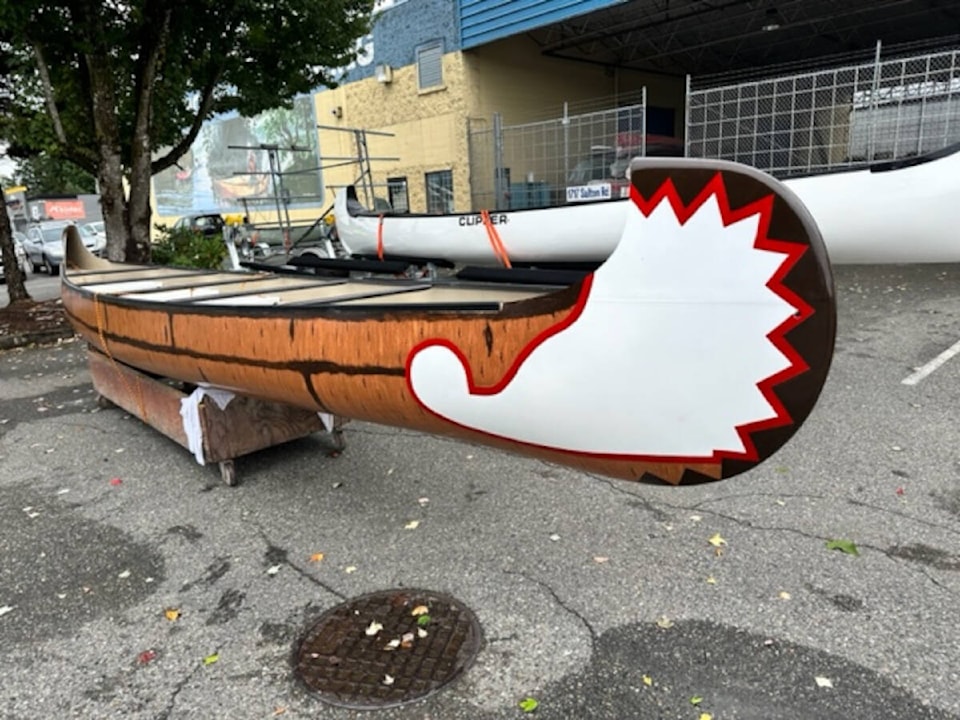Cultural events throughout the Gwich’in Settlement Area will soon have a new centrepiece as the Gwich’in Tribal Council (GTC) seeks to bring more canoeing back to the region.
Four replica voyageur canoes — designed to showcase the traditional watercraft of traders, explorers and travellers of the Mackenzie water basin — have been commissioned by the the GTC and are anticipated to be in the water this summer. There will be one canoe for each Gwich’in Settlement Area community, including Tsiigehtchic, Aklavik, Teetl’it Zheh (Fort McPherson) and Inuvik.
The GTC is also planning a traditional paddling trip this summer using the new watercraft from Teetl’it Zheh to the soon-to-be-opened Gwich’in Wellness Camp. Still in the early stages of planning, the multi-day trek would follow the traditional routes used by Gwich’in as they traversed the region.
“As a health and wellness initiative, the GTC board decided to purchase these voyageur canoes,” said GTC grand chief Ken Kyikavichik. “They come at a cost of about $70,000 to $80,000 each. What we would like to do is utilize these canoes along with some of our community members and knowledge keepers to work with our youth.
“They are larger canoes, not unlike the canoes the Gwich’in used to use in the area that were made out of things such as moose hide.”
Kyikavichik said moose hide canoes were in regular use in the area up until the early 1900s. The vessels are built to modern racing standards, using a fibreglass shell, and will crew six to 10 people to paddle effectively.
Gwich’in and other Dene peoples were canoeing the waterways of the North long before European colonists and traders showed up. The three major waterways of the GSA, Nagwichoonjik (Mackenzie River), Teetl’it Gwinjik (Peel River), and Tsiigehnjik (Arctic Red River) served as the means of trade, travel and self-development. So the idea of developing a community river trek following those historic trade and travel routes has gathered considerable support.
A date is still being finalized, but Kyikavichik said organizers were aiming to have the trip before the Midway Music Festival in August, so he anticipated the voyage would cast off sometime in the later weeks of July.
He added that the plan is for a wellness trip, not a race, and the underlying goal is to give youth a way to connect with their heritage and learn valuable on-the-land skills.
“It’s an opportunity for young people to stop along the way to take their time,” he said. “More importantly, learn how to live out on the land and set up camps along the way. To cut wood for themselves and live like the Gwich’in have in the Mackenzie delta here for thousands of years.
“One of the things we’re doing here is replicating what other Indigenous nations such as the Tlicho are doing. The Tlicho have a pretty successful summer canoe trek to some of their communities in the North Slave region of the Northwest Territories. We believe that young people in particular have a better understanding of who they are and our history and how we have existed in our territory, and that sets them up very well for their careers, whether they go to post-secondary education or undertake trades training.
“The idea is that we are providing instruction to our young people in traditional ways of the Gwich’in, while also encouraging them to pursue post-secondary studies. A lot like the Tlicho, we believe that [when] you are skilled in the ways of the Gwich’in but also in the Western world, you are strong like two people, so these types of opportunities help us develop that and help to unlock the potential for very young people.”
Putting together a trek like this takes extensive organizing. Kyikavichik said the GTC is hoping to attract guides, support workers and youth counsellors.
He said more information will be released on social media as the plan develops.
“We do have a very open approach right now and we are part of the reason why I issued what I did — to let our people know that these issues are coming and we will require the expertise of our people to help hold this trip together,” he said.
